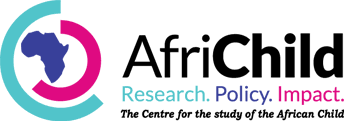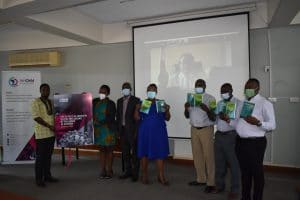
Children who experience physical and sexual abuse are more likely to perform poorly in school tests, miss classes, and to drop out of school which directly affects their educational performance and life trajectory.
AfriChild has started baseline survey data collection for phase two trial of the Good School Toolkit for secondary schools.
The baseline survey aims to explore the violence prevention needs of students, their life experiences and the mental health status of students. The survey will be conducted in 8 schools in Wakiso and Kampala.
The findings of the baseline study will be used by Raising voices to monitor and assess the effectiveness of the Good School Toolkit before it is rolled out to other schools after a pilot phase.
This pilot trial is a collaboration between the London School of Hygiene & Tropical Medicine, Raising Voices and the AfriChild Centre, Makerere University.
The Good School Toolkit
Raising Voices, a Ugandan non-governmental organisation, has developed the Good School Toolkit, an intervention to prevent violence from school staff towards students, and peer violence between students. It is a whole-school approach which aims to reduce multiple forms of violence and change power dynamics underpinning violence, by changing the operational culture of the school.
The toolkit helps educators and students explore what makes a healthy, vibrant, and positive school and guides them through a process to create their vision.
In a study conducted in 2005 in Uganda by Raising Voices, over 60% of children interviewed said they experienced violence at school on a regular basis. To address this urgent issue, Raising Voices developed The Good School Toolkit, a methodology for creating violence-free schools.
The toolkit contains six steps that are designed to take a school through a process of growth that mirrors the stages of behavior change.
“The Good School Toolkit enables teachers and administrators to excel as educators. It enables schools to become the pride of their communities. It enables students to gain greater skills, knowledge and confidence—for becoming the parents, professionals and leaders of our future.” Dipak Naker, Co-director, Raising Voices
Scaling up to Secondary Schools
The toolkit was initially developed for primary schools. The toolkit was tested in a cluster randomised controlled trial of primary schools in 2012-2014, where 21 schools received the Toolkit and 21 received it after the study ended.
The Toolkit reduced reported past week physical violence inflicted by school staff on young adolescents (mean age 13 years) by 42%, physical and emotional violence between peers, and severe physical violence and injury from staff towards students.
In 2015-16, a study was conducted to better understand the secondary school context in Kampala and adapt the Toolkit for use in these schools.
Raising Voices partnered with two secondary schools, and spoke to administration, teachers, students and key stakeholders in Kampala to explore their violence prevention needs.
Data from the survey showed physical and emotional violence from peers remained prevalent in secondary schools, with more than 60% of students reporting some past year exposure.
Sexual violence was much more common in secondary schools – for example, 20.4% of secondary vs. 3.9% of primary girls, and 7.6% of secondary vs. 1.6% of primary boys, reported past year sexual violence from a peer.
Intimate partner violence was also commonly reported by students who had an intimate partnership: 30% of female and 21% of male students reported past year physical, sexual or emotional violence.
Violence and Children
Physical, sexual and emotional violence against children and adolescents are widespread. School is a prime risk environment where children and adolescents are exposed to such violence.
Main perpetrators of violence against children and adolescents include peers, intimate partners, and school staff.
The recently published national survey of Violence Against Children in Uganda found that 59% of young females and 68% of young males reported experience of physical violence, 34% young females and 36% of young males reported emotional violence, and 35% of females and 17% of males report sexual violence under age 18.
Disease burden and poor education outcomes
In Uganda, sexual and intimate partner violence (IPV) are one of the top 10 leading causes of disease burden.
Experience of violence is a well-known risk factor for ill-health and for poorer educational outcomes. Those who have experienced violence as children, for example childhood sexual abuse are at increased risk for depression, suicide, sexual risk behaviours, and increased alcohol consumption.
Children who experience severe physical violence are at increased risk of adverse mental health outcomes, injury and disruptive behaviour.





